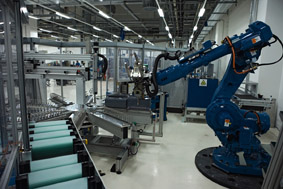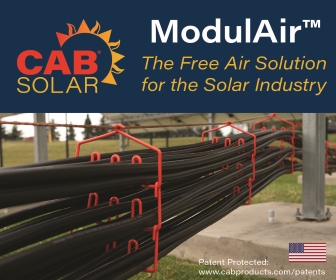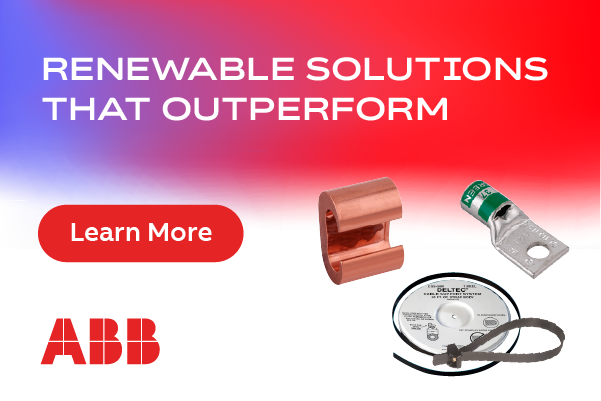Maintaining Quality Control: Total quality management & automated PV manufacturing
 The target of PV module manufacturing is to offer quality products that are highly efficient, but at the lowest possible cost per watt peak. However, this goal isn’t always accomplished. Many PV manufacturing plants focus solely on assembling completed parts and, without the proper “total quality management” (TQM), this can lead to a significant loss in quality. When a manufacturing philosophy is applied that considers process optimization across the whole value chain—from the silicon ingot to the finished module—there’s greater quality control and efficiency. DIN EN ISO 9001 and 14001 are the standard certificates for an integrated quality system.
The target of PV module manufacturing is to offer quality products that are highly efficient, but at the lowest possible cost per watt peak. However, this goal isn’t always accomplished. Many PV manufacturing plants focus solely on assembling completed parts and, without the proper “total quality management” (TQM), this can lead to a significant loss in quality. When a manufacturing philosophy is applied that considers process optimization across the whole value chain—from the silicon ingot to the finished module—there’s greater quality control and efficiency. DIN EN ISO 9001 and 14001 are the standard certificates for an integrated quality system.
Wafer production: tracking
With increased work on process and tool mastering, the tracking of wafers throughout the process has recently gained more attention in the industry. With a sophisticated production control system and information on the process history of the materials used in production, different materials can be tracked from wafer production to module manufacturing. For example, feedback loops allow the evaluation of new materials (e.g. silicon) on a module level within a short time.
To increase control of individual wafers, a wafer-marking method is recommended. For instance, a laser can imprint a barcode on the sidewall of the brick. Along with each marking, the position of the wafer can also be marked by a laser groove running diagonally across the brick. The grooves at the sidewall of the wafer can, then, be tracked throughout the cell process. It’s important to note that the laser process should be optimized, in this case, to maintain a good contrast of the laser marks throughout the process.
For a module manufacturer purchasing wafers, it’s important to incorporate this type of inputs and data from its upstream supplier into its TQM approach to ensure a quality end-product.
Cell production: control production & testing
As part of quality control, cell production should be optimized when based on an inline scheme in which lines are operated in parallel. A cluster concept allows the exchange of cells at multiple positions during the process. The exchange of cells at these positions can be used to compare the tool results from different lines.
When evaluating a cell manufacturer, it’s important to obtain and analyze inline measurements for key parameters, such as reflection or sheet resistance, which are essential to control production. The data obtained should be transferred to the production control system, and a statistical process control (SPC) applied to ensure all processes are at the optimum working point.
Any quality cell manufacturer should be performing electrical testing of solar cells combined with an electroluminescence (EL) test. The EL tests allow the generation of a pareto of cell efficiency detractors, as a base for further engineering work. The careful investigation of silicon material properties throughout the manufacturing process is essential for cell efficiency optimization, as well as the optimization of screen print. The correct methodology for determining critical parameters in cell production provides the basis for quality in module manufacturing.
Since a cell’s quality directly impacts the overall yield of a solar module, it’s essential that the quality control of cell manufacturing be factored into the TQM.
Module production: High-level automation
High-level automation in module production is essential for product quality, which requires reproducible processes at every production step. In addition to reproducibility, the automation prevents typical human errors that cause problems with PV modules.
Key elements of automation:
• Automated transport of materials with a low tact rate; operators are focused on production and quality control.
• Automatic processes for soldering, lamination, framing, mounting of junction box, and flashing.
• Quality control based on manual inspection, camera systems, electrical testing (including assessment of the diode characteristics), and electroluminescence (EL)—a key diagnostic tool that visualizes potential deficiencies of modules.
High-level automation increases the amount of production process data and, combined with in-depth knowledge of key cell parameters and cell production best practices, results in excellent quality control.
High-level automation in a production plant generates additional investments for robotics, as well as an IT system for the plant, which virtually eliminate human error and produces high-quality modules. Modules manufactured at automated sites with TQM offer better and longer warranties.
Plant investment
To establish excellent quality control, a PV plant needs additional investment for measurement systems, data systems, automation, and engineering. Although there are initial upfront costs incurred during the development of a plant, with a focus on quality control, the result of higher reliability is of key value for a product, which is expected to function more than 30 years.
Furthermore, the knowledge and first-hand experience of vertical integration is key for deploying a holistic approach in creating optimized modules. An example of the type of optimization that can be achieved is the development of the three-busbar cell design, which creates a higher yield module. Another example is the optimization of cell sorting to ensure modules achieve good “lowlight” performance, and avoidance of hot spots that come from cells with lower standard diode characteristics.
Because of feedback loops between cell and module production and fast module build, faster implementation of industry innovations in cell processing is possible, and advancements of process and materials are verified by in house R&D labs and climatic chambers. Optimum quality of modules can be achieved with high-level automation in manufacturing and by applying insights gained from vertical integration to the process of selecting a cell provider. The investment in automation and factory set-up achieves benchmark quality in PV products, which tends to reduce any customer complaints to below the industry average.
Dr Karl Heinz Kusters is the head of Technology at Conergy.
Conergy
www.conergy.us
Author: Dr Karl Heinz Kusters
Volume: September/October 2011












